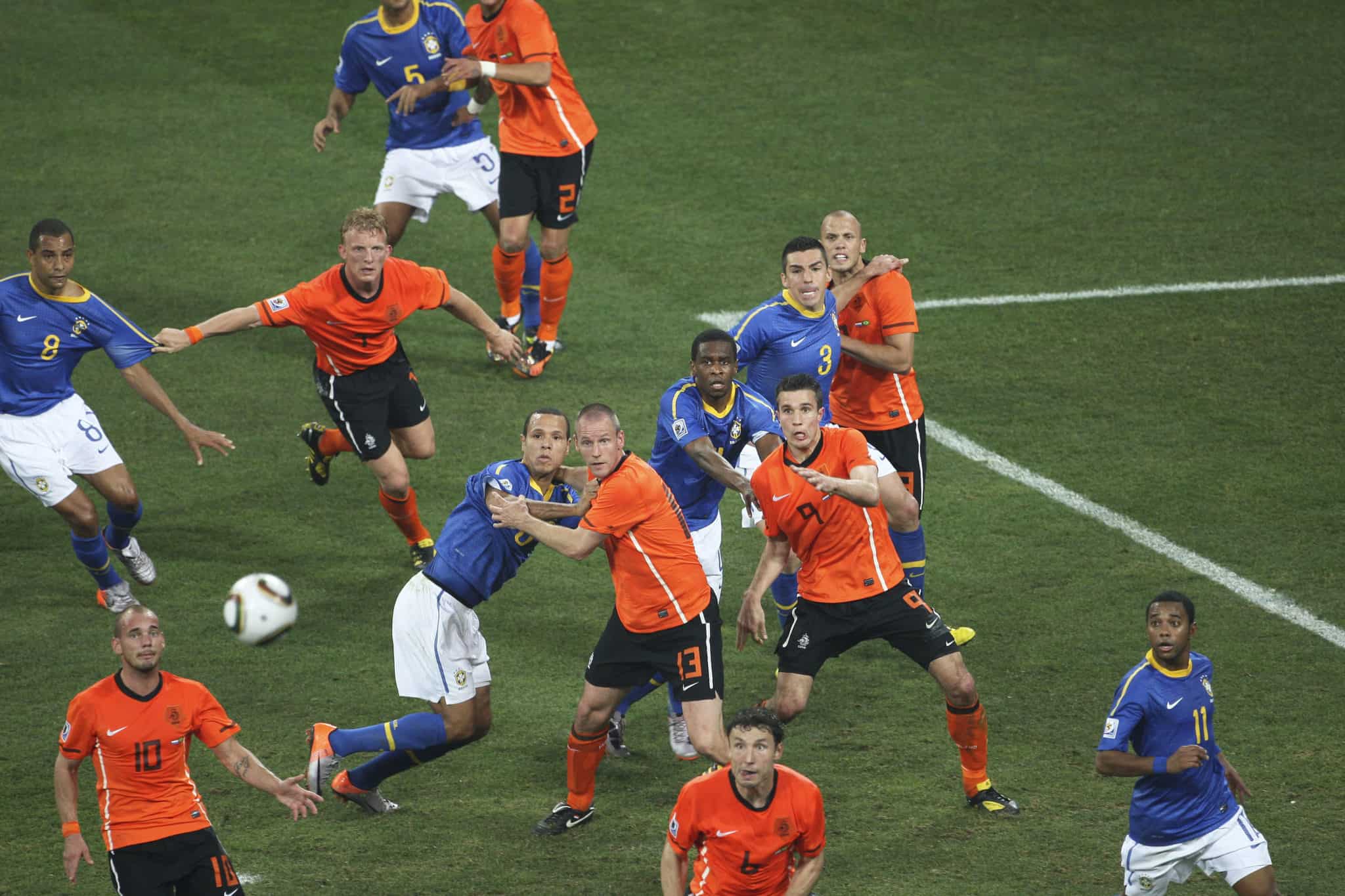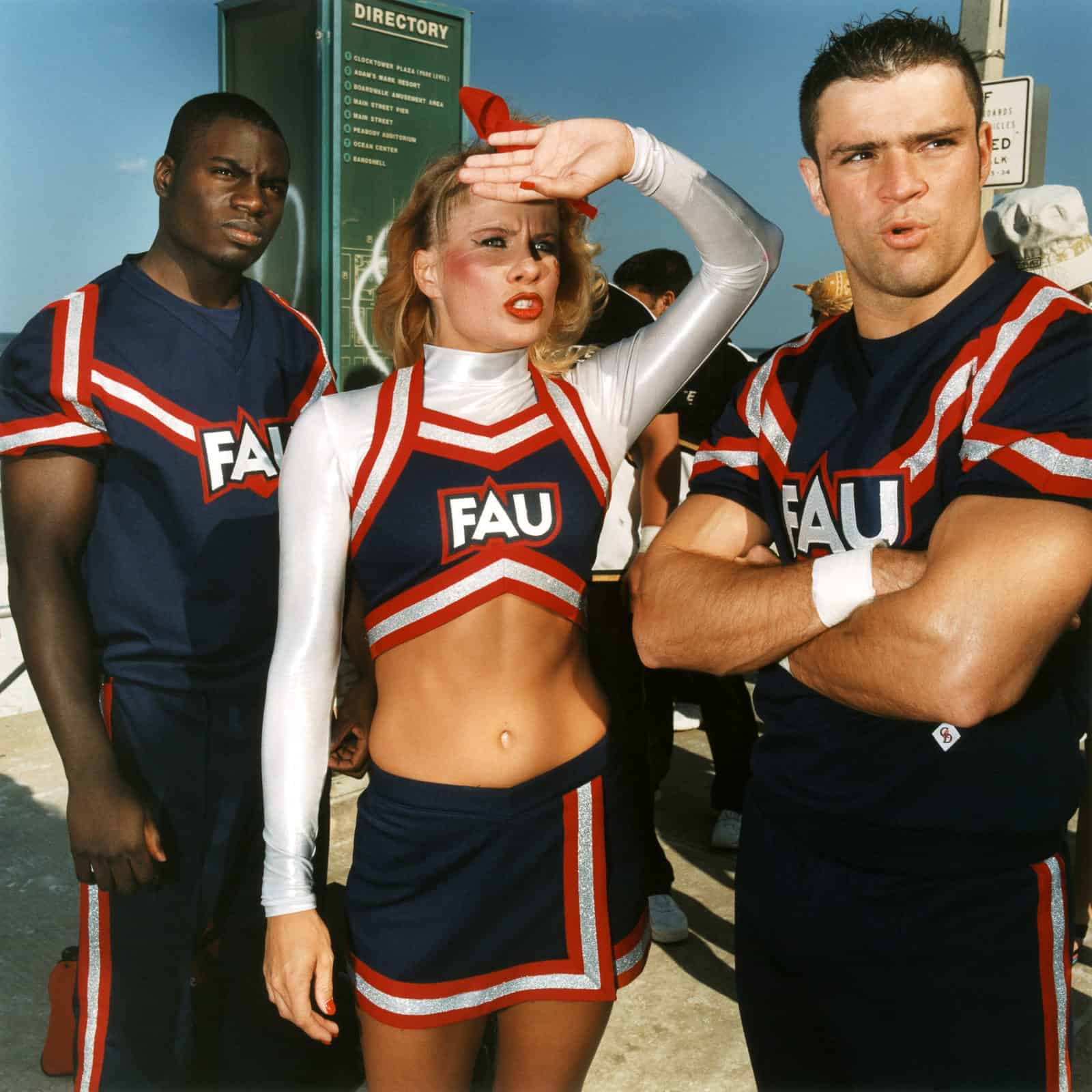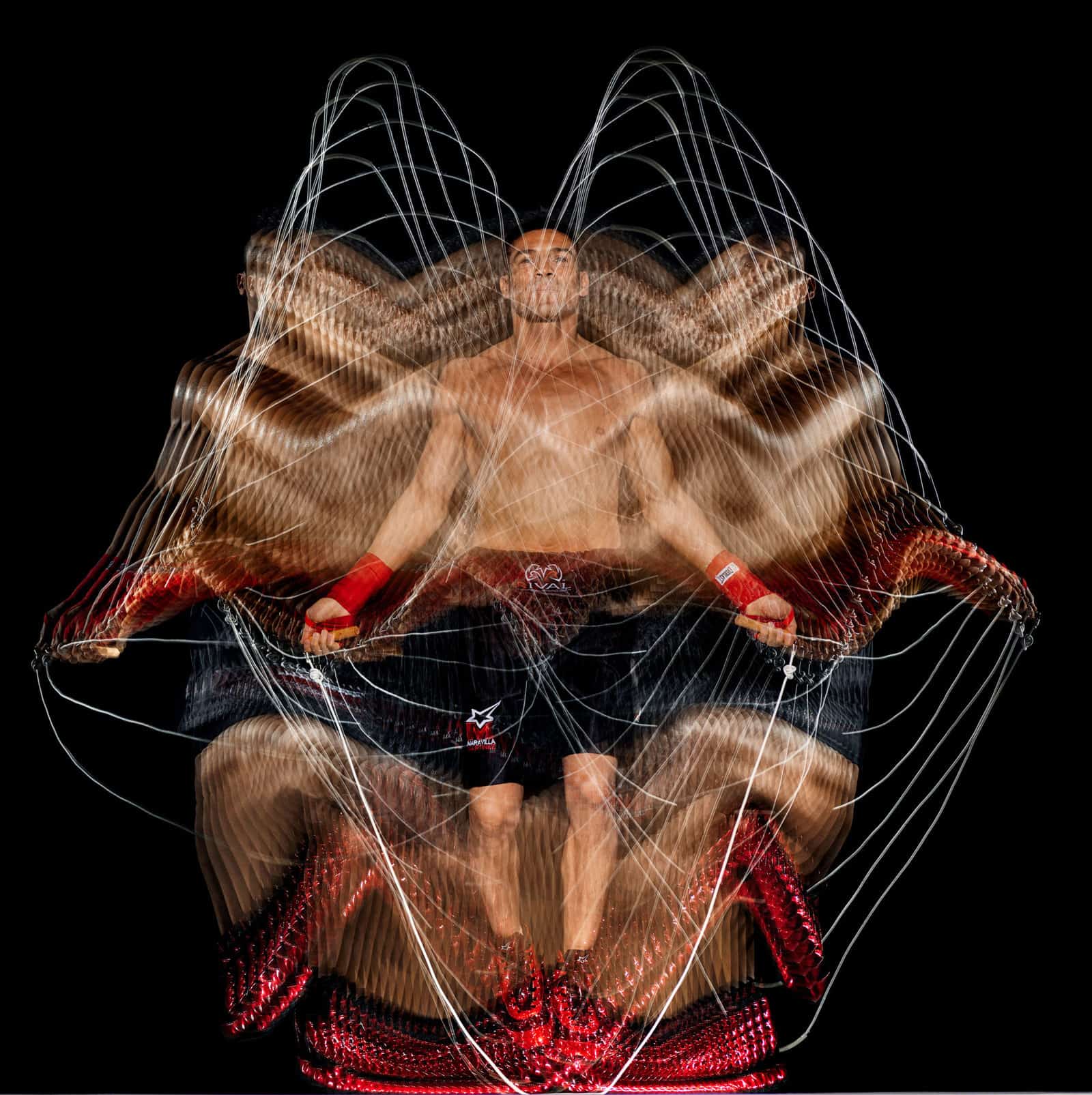May 6 through July 29, 2018
Trexler Hall and Scheller, Rodale and Fowler Galleries
Many might see sports and the art world as being worlds apart—one discipline defined by muscle, the other by intellect. In reality, they have more in common than you might think. Much more. We demonstrated that in summer 2018 as we presented Who Shot Sports: A Photographic History, 1843 to the Present along with complementary exhibitions and programs to stimulate conversation, reflection and understanding about these not-so-disparate disciplines.
The show, curated by photographic historian Gail Buckland and organized by the Brooklyn Museum, features nearly 200 photographs from a wide array of sports around the globe, exposing not only the physical prowess of athletes but universal themes such as aesthetic beauty, teamwork and raw human emotion.

Mark Leech (British, born 1956). World Cup, Netherlands vs. Brazil, July 2, 2010, printed 2016. Inkjet print. Courtesy of the artist and Offside Sports Photography. From Who Shot Sports: A Photographic History, 1843 to the Present, organized by the Brooklyn Museum.
“Sports have a larger audience in the general public and particularly in the Lehigh Valley,” says assistant curator Claire McRee. “It draws people together and creates a sense of inclusion or belonging. People feel very much a part of sports, as we’ve seen with the recent Eagles’ Super Bowl win.”
Capturing more than the glory of winning or the agony of defeat, Who Shot Sports transports us to powerful, sometimes quiet moments in time. The exhibition highlights sports photographers and their place in photographic history, not merely sports history. Sports photographers have played a leading role in the evolution of camera and film technology, as they are driven to portray what the naked eye alone cannot record.
See a slideshow of images from the exhibition.
You’ll witness the curving grace of a diver in the split second she enters the water, captured on Polaroid by George Silk, as well as iconic sports moments like Neil Leifer’s World Heavyweight Title: Muhammad Ali in action after first round knockout of Sonny Liston at St. Dominic’s Arena, 1965. You’ll be engaged by historic political movements, such as American track and field athletes Tommie Smith and John Carlos protesting with the Black Power salute on the winner’s podium at the 1968 Summer Olympic Games.
“It’s a show that takes this popular phenomenon and looks at it through a cultural lens,” says vice president of curatorial affairs Elaine Mehalakes. “Sports and sports photography embody the human experience in a way that is so easily identifiable.”

Brian Finke (American, born 1976). Untitled (Cheerleading #81), 2001, printed 2003. Chromogenic print. Courtesy of the artist. From Who Shot Sports: A Photographic History, 1843 to the Present, organized by the Brooklyn Museum.
Who Shot Sports has something for everyone, from icons like tennis champion Serena Williams to little-known events such as the Spartakiada, a demonstration of physical group prowess that was the Soviet Union’s answer to the Olympics.
These images serve as a springboard to delve deeper into contemporary issues such as race, gender and inclusion. The Museum will initiate these conversations this summer with Sports, Aesthetics and Material Culture, a convening where athletes, artists and community members will discuss the relevance and context of art amid today’s cultural landscape.
“A lot of these images are still reflective of the undergirding of what’s happening politically, such as what’s happened with [NFL football player] Colin Kaepernick,” says the Museum’s public engagement manager Dianne Smith.
As a complement to Who Shot Sports, the Museum has drawn on its own collection to present an exhibition about sports and fashion called Who Wore Sports. The printed novelty fabrics and garments in this show will reveal how sports challenged traditional femininity and pushed fashion in new directions during the 1920s and 1930s.

Sergio Martinez by Howard Schatz, from his book At the Fights: Inside the World of Professional Boxing. On display in Who Shot Sports: A Photographic History, 1843 to the Present, organized by the Brooklyn Museum.
“We have one of the largest collections in the country of printed designer silks, which relate to our local industrial history,” McRee says. “It’s very possible some of these dressmaking textiles were woven in Lehigh Valley mills, printed in factories elsewhere, and now have returned to us as part of the Museum collection.”
Some of the highlights of this exhibition include tennis player Helen Wills’s A Game of Tennis dress fabric (1926), Derby Day dress fabric (1924), a handkerchief with football schedules (1937), and a pair of 1930 beach pajamas made from a wild college sports pennants print. These fabrics evoke daring, youth and independence—qualities associated with athletes that fashionable, forward-thinking women were bold and daring enough to wear.
Admission to Who Wore Sports is free to members and on Sundays. Admission to Who Shot Sports is free to members and with Museum admission on Wednesday through Saturday. On Free Sundays, admission to the exhibit is $8 for adults, $6 for children ages 7-17 and $20 per family (2 adults and any number of children). Children under 6 are free.
Who Shot Sports: A Photographic History, 1843 to the Present is organized by the Brooklyn Museum and curated by Gail Buckland, Benjamin Menschel Distinguished Visiting Professor at The Cooper Union for the Advancement of Science and Art.
Featured image: Franck Seguin (French, born 1960). Mixed Martial Arts Fight, UFC 154, Montreal, Canada, 2012, printed 2016. Inkjet print, 9 1/4 x 14 in. (23.7 x 35.6 cm). Courtesy of the artist. From Who Shot Sports: A Photographic History, 1843 to the Present, organized by the Brooklyn Museum.
The Allentown Art Museum would like to thank the Presenting Sponsor of Who Shot Sports :

Additional support for the presentation for Who Shot Sports at the Allentown Art Museum has been provided by the County of Lehigh, Service Electric Cable TV and Communications, Coordinated Health and the Lehigh Valley IronPigs.
The exhibition program at the Museum is supported through the generosity of the Harry C. Trexler Trust, Julius and Katheryn Hommer Foundation, The Century Fund, Bernard and Audrey Berman Foundation, Leon C. and June W. Holt Endowment, Martin Guitar Charitable Foundation, Pennsylvania Council on the Arts, National Endowment for the Arts, and the Friends of the Museum.

